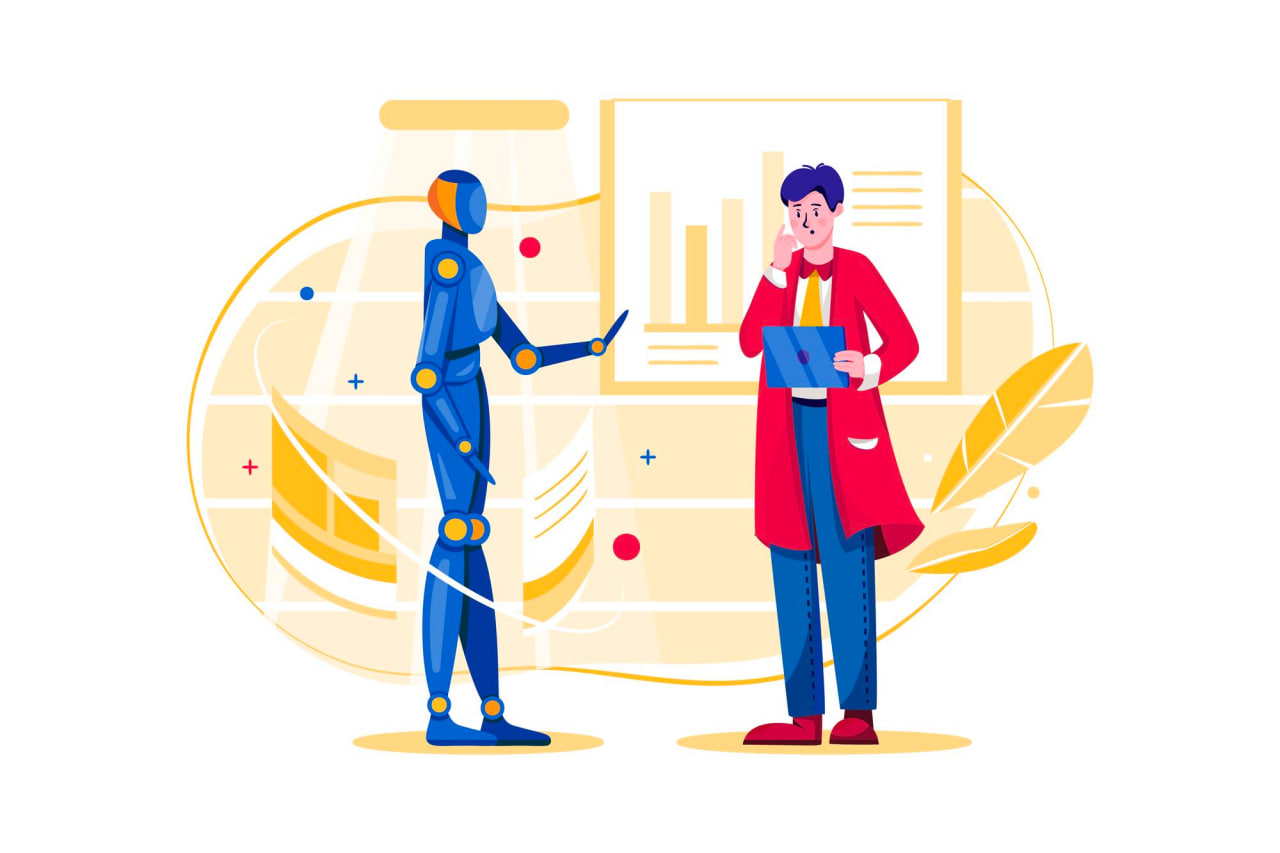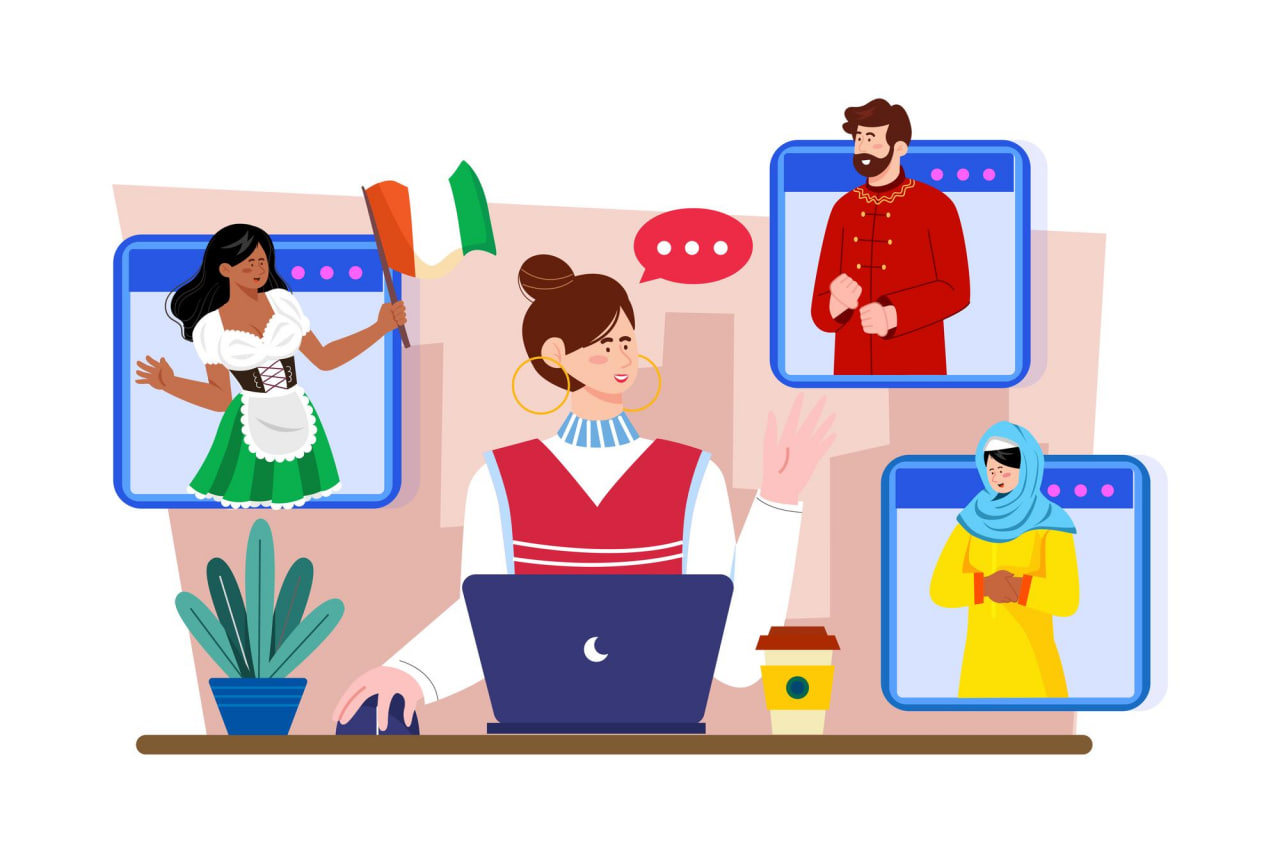When we enjoy a foreign film with flawless subtitles or watch a YouTube video that seamlessly switches between languages, we often take for granted the magic happening behind the scenes. This magic, powered by Artificial Intelligence (AI), is revolutionizing the way content is localized for global audiences. In this blog post, we’ll pull back the curtain and take you on a journey behind the scenes to understand how AI transforms video localization.
Traditionally, video localization was a labor-intensive process that involved human translators, voice actors, and meticulous attention to cultural nuances. While human expertise is still invaluable, AI has changed the game. Here’s how:
1. Machine Translation
Machine Translation (MT) is the cornerstone of AI-driven video localization, enabling content creators to bridge linguistic gaps and reach global audiences effectively. It’s the process by which artificial intelligence systems automatically translate text or speech from one language into another, and it has evolved into a powerful tool for making content accessible and relatable across borders.
Machine Translation relies on advanced algorithms and linguistic analysis to produce accurate translations. There are two primary approaches to MT: Statistical Machine Translation (SMT) and Neural Machine Translation (NMT).
-
Statistical Machine Translation (SMT): SMT models use statistical patterns and probabilities to determine the best translation for a given sentence. They rely on complex mathematical models to estimate the likelihood of various translation options.
-
Neural Machine Translation (NMT): NMT, on the other hand, leverages deep neural networks to learn the relationships between words and phrases in different languages. NMT models have proven to be more effective in capturing context and producing fluent translations.
The underlying technology of NMT consists of recurrent neural networks (RNNs) and attention mechanisms, which enable the model to capture long-range dependencies and focus on relevant parts of the source text. The result is translations that not only convey the words but also the intended meaning and tone. NMT models have been trained on vast datasets, allowing them to understand context, idioms, and even humor. As a result, the quality of translations has soared, and turnaround times have plummeted.
2. Natural Language Processing (NLP)
AI’s ability to understand the intricacies of language goes beyond translation. NLP algorithms can capture the essence of language, including its cultural and contextual nuances. This means that video scripts and subtitles can be localized not just word-for-word but meaning-for-meaning.
NLP plays several essential roles in video localization:
-
Cultural Adaptation: Successful localization goes beyond translation—it involves adapting content to align with the cultural values, beliefs, and sensitivities of the target audience. NLP algorithms are designed to detect and adapt to these cultural nuances, ensuring that content resonates with viewers on an emotional and cultural level.
-
Contextual Understanding: Language is rich in context. Words and phrases often take on different meanings based on the context in which they are used. NLP models are equipped to analyze the surrounding text and understand the intended meaning, allowing for precise localization.
-
Idiomatic Expressions and Slang: Every language has its own set of idiomatic expressions and slang. NLP algorithms are trained to recognize and appropriately adapt these language-specific elements, ensuring that localized content sounds natural and engaging.
-
Tone and Style: In video content, the tone and style of speech are critical. NLP can identify the tone—whether it’s formal, informal, humorous, or serious—and adjust the localization accordingly to maintain the intended emotional impact.
-
Consistency: For content that spans multiple videos or episodes, consistency in language use is crucial. NLP ensures that terminology, character names, and other linguistic elements remain consistent throughout a series, contributing to a cohesive viewer experience.
As AI continues to advance, so does NLP. Future developments in NLP technology will likely lead to even more accurate and nuanced localization. This will enable content creators to engage with global audiences on a deeper level, transcending language barriers to deliver meaningful and relatable content. NLP leverages a range of advanced techniques to accomplish its tasks:
-
Named Entity Recognition (NER): NER is a subfield of NLP that identifies and classifies entities such as names of people, places, organizations, dates, and more. This helps ensure accurate localization of content, especially in contexts where specific names and references are essential.
-
Sentiment Analysis: Sentiment analysis tools are used to gauge the emotional tone of the content. This is especially valuable when adapting content for different markets, as it helps maintain the intended emotional impact.
-
Machine Learning Models: NLP models often employ machine learning techniques, including deep learning, to improve their ability to understand and adapt language. These models learn from large datasets and continually refine their understanding of language.
3. Voice Cloning
Ever wondered how your favorite animated characters sound the same in different languages? AI-driven voice cloning is the secret. By training models on the unique characteristics of a voice, AI can replicate it in other languages. This ensures consistency and authenticity in dubbed content.
Voice cloning is a groundbreaking technology that empowers AI to recreate the vocal characteristics of a voice actor or speaker, allowing for consistent and authentic dubbing across different languages. This capability is particularly valuable in video localization, where maintaining the integrity of a character’s or narrator’s voice is essential.
Voice cloning relies on advanced machine learning techniques, particularly those in the domain of speech synthesis and generation. Here’s a glimpse into the key components:
-
Voice Profiling: In the initial phase, a voice actor’s or speaker’s voice is meticulously analyzed and recorded. This process captures various aspects of their vocal signature, including pitch, tone, accent, pacing, and idiosyncrasies.
-
Deep Learning Models: Voice cloning employs deep neural networks, specifically generative models like Generative Adversarial Networks (GANs) and Variational Autoencoders (VAEs). These models are trained on the voice data collected during profiling.
-
Text-to-Speech (TTS) Synthesis: Once trained, the AI model can generate speech in the cloned voice. Given a text input, the model can produce spoken content that closely resembles the original voice actor’s delivery style.
4. Automated Subtitling and Captioning
AI algorithms can automatically generate subtitles and captions for videos. Not only does this save time, but it also enhances accessibility for viewers who are deaf or hard of hearing. AI can even align subtitles with audio, creating a smoother viewing experience.
Automated subtitling and captioning is a crucial aspect of the AI-driven video localization process. AI algorithms can automatically generate subtitles and captions for videos with remarkable accuracy. This not only saves significant time and resources but also enhances the accessibility of the content for viewers who are deaf or hard of hearing.
AI-driven subtitling and captioning involves several technical components, such as:
-
Speech Recognition: AI models utilize speech recognition algorithms to convert spoken words into text. This technology relies on deep learning and recurrent neural networks to transcribe audio accurately.
-
Text Segmentation: Once transcribed, the text is segmented into appropriate subtitle or caption units. AI algorithms ensure that the text is synchronized with the audio and follows industry-standard timing conventions.
-
Language Detection: AI can automatically detect the language spoken in the video, enabling the generation of subtitles in multiple languages.
-
Quality Control: Automated quality control checks are performed to ensure that subtitles and captions are free from errors and adhere to accessibility standards.
By automating subtitling and captioning through AI, content creators can ensure that their videos are not only accessible to a broader audience but also compliant with accessibility regulations, making their content inclusive and user-friendly.
5. Cloud-Powered Scalability
Cloud services are the backbone of AI-driven video localization, offering the scalability and computational resources required for efficient processing. Key cloud services and technologies include:
- Cloud Computing Platforms (e.g., AWS, Azure)
Cloud platforms provide the infrastructure needed to run AI algorithms at scale. These platforms offer GPU resources, which are essential for training and inference tasks, enabling rapid processing of video and audio content.
- Microservices Architecture
To maximize scalability and maintainability, AI-driven localization often employs a microservices architecture. Each localization component, from translation to voice cloning, operates as an independent service. This decoupling allows for flexible scaling of specific functions based on demand.
- Serverless Computing
Serverless computing further enhances scalability by automatically provisioning resources as needed, eliminating the need for capacity planning and reducing operational overhead.
- Load Balancers
Load balancers distribute incoming traffic across multiple instances to ensure high availability and efficient resource utilization.
The Process in Action
Let’s take a closer look at how AI powers video localization:
-
Content Ingestion: The video and associated content are uploaded to the localization platform.
-
Transcription: AI transcribes the audio to text, enabling the localization process to begin.
-
Translation: NMT models translate the text into the desired languages, capturing the meaning and cultural context.
-
Voice Cloning: If needed, AI matches the original voice actor’s tone and style in different languages.
-
Subtitling and Captioning: AI generates subtitles and captions, ensuring they are synchronized with the audio.
-
Quality Assurance: Human experts review the localized content to ensure it meets quality standards, making any necessary adjustments.
Beyond Localization
AI’s capabilities extend beyond translation. It offers valuable insights into viewer engagement, helping content creators understand their audience better. Data-driven decisions can guide content strategies, leading to higher engagement and broader reach.
The marriage of AI and video localization is transforming the global content landscape. What was once a complex and time-consuming process has become streamlined, efficient, and accessible to content creators of all sizes. As AI continues to evolve, we can expect even more innovation and excellence in video localization. The next time you enjoy a seamlessly localized video, you’ll know that AI was the unsung hero working tirelessly behind the scenes.
Stay tuned as we continue to explore the fascinating world of AI-driven video localization and its impact on global communication.
Need help in localizing your video content? Embark on a transformative journey with Go Global and witness your YouTube empire soar to new heights. Embrace the power of AI-driven video localization to transcend language barriers, engage global viewers, and maximize your revenue potential. With Go Global as your trusted partner, there are no boundaries to your success.




Use the share button below if you liked it.